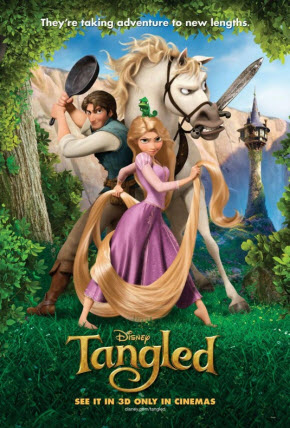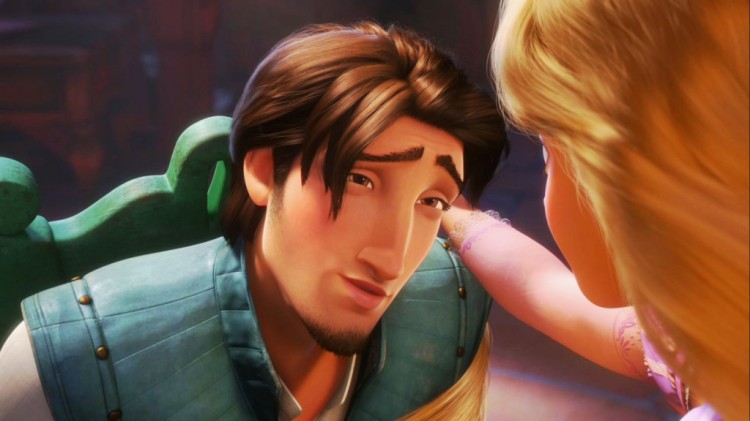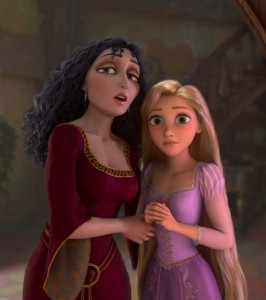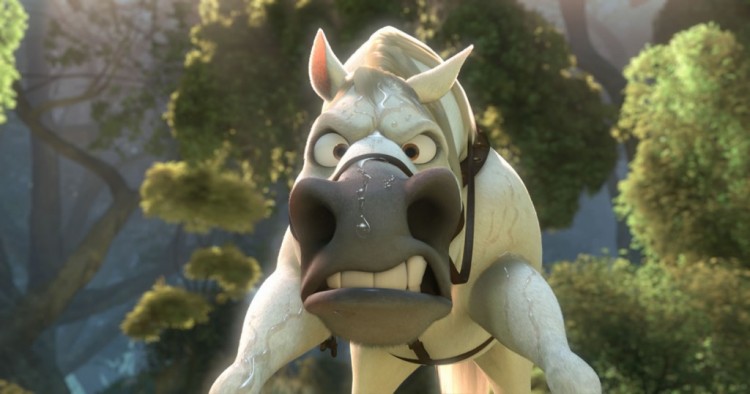A story encouraging young women to ignore the dangers of a phallocentric world and belittle wise, self-empowered female role models.
By Cadence Ohana
It’s time for the winter solstice celebration–“Christmas” for those of you still stuck under the patriarchy’s thumb–which means there’s plenty of shopping to be done. My younger sister Belinda asked me to watch after her children, my niece Paula and my nephew Walker, while she went off to buy toys with money she earned working for one fat blowhard of a man so she could then tell her children on December 25 that another fat blowhard of a man loved them enough to bring them presents.
I’ve previously made clear my feelings on how the myth of Santa Claus makes our proto-sisters believe they have to rely on older men to provide them with material goods in order to be happy, and I’ve even demonstrated in the past through a test case that belief in Santa Claus can be directly linked to our young sisters being tricked into sexwork, so I won’t go into the subject again here. I will say I wasn’t too happy about helping Belinda perpetrate this cruel phallocentric holiday (have you ever really looked at a candy cane before? And don’t even get me started on “nutcrackers”) on my niece and nephew, but she offered to pay our way into a movie to help the time go by, and when I heard what movie my niece and nephew wanted to see I knew I had to see it so I could tell you how damaging it is to the feminine psyche.

Pastel dress? Check. Blonde white girl? Check. Frying pan? Check. It’s like they’re not even trying here.
We all know the story of Rapunzel, right? One of our sisters has been locked up in a tower because the men in her life want to deny her the right to control her own sexuality. (Wikipedia has some ridiculous claim about Rapunzel being traded away to Dame Gothel in exchange for some lettuce, but I’ve talked to the Brothers Grimm in several seances and I can assure you it was Rapunzel’s father who put her in that tower. The whole story just doesn’t make sense otherwise.) Eventually some prince comes along to rescue her (because no woman can get herself out of trouble, ever, of course) and uses her long hair to climb up the tower she’s imprisoned within, after which the prince claims Rapunzel as his property and takes her off to imprisonment in his castle instead of her father’s tower. They might as well just call the whole story “Rape-unzel,” because that’s really what it’s about.
Disney’s version didn’t change things much. Now I was late getting into the theater so I came in near the end of (what I assume was) the first musical number, with Rapunzel singing to herself in the tower, so I missed the set-up, but I caught on pretty quickly that Dame Gothel had rescued Rapunzel from a life of patriarchal oppression by giving her a home in the tower and warning Rapunzel about the evils of the male-dominant regime that ruled the kingdom. I was surprised to hear so much blunt wisdom in Dame Gothel’s song “Mother Knows Best,” and for a moment I thought to myself, “Hey, maybe Disney is going to get this one right.” It could happen, right?

Oh look, a strong, independent, wise, ‘craft-practicing single woman over 40 in a Disney movie. She must be the villain.
Of course not. We’re soon led to believe that Dame Gothel’s warnings about the world outside the tower–especially those concerning how quickly the men of the world would abuse our heroine–are unfounded. There’s some kind of story about a stolen tiara and glowing hair and the kingdom’s soldiers not being able to find the lost princess despite her being in a blatantly phallic structure just outside the city (of course Rapunzel is a princess–it’s a Disney movie, and we all know that means the only thing that makes a woman valuable as far as the story is concerned is her position as marriageable chattel for her royal father). Whatever. The real story is about how Rapunzel is led from the rape-proof safety of Gothel’s tower into the penis-dominated hell that is the outside world, and how Disney convinces us that Gothel, the only person in the movie who clearly has Rapunzel’s best interests at heart, is “evil” for trying to prevent Rapunzel from becoming just another victim of the patriarchal fascist state Gothel once saved her from.
Let’s look at a few of the more egregious offenses against woman-kind to be found in this pap.

Notice the emphasis on her long, blonde hair. We’re told that when it’s cut, it loses its power and turns brown. Translation: long-haired blonde women are beautiful and powerful, and short-haired brunettes are worthless human beings.
1) Rapunzel is portrayed as a weak, stupid, clumsy girl incapable of helping herself. Despite wanting to leave the tower, she doesn’t actually do so until a man comes along to protect her while she’s outside. Once she’s outside, she bounces between childish glee and self-deriding sobs, clearly an attempt by Disney to insinuate that women are incapable of controlling their emotions. What’s more, she wields a frying pan as her weapon of choice. What’s this supposed to mean? Even if, goddess forbid, a woman should step out of the kitchen, she should still take along her frying pan as a reminder that the kitchen is the only proper place for her to be? And don’t get me started on the fact that she’s barefoot for the whole movie. Geez, Disney, why not just follow the original fairy tale all the way and make Flynn rape her and knock her up while they’re gallivanting around? Did Disney think it would be too obvious if Rapunzel was barefoot, carrying around kitchen utensils and pregnant at the same time?
The worst thing is I know Disney’s trying to portray their version of Rapunzel as an independent, modern woman as a way of snidely undermining the femvolution in gender politics, the same way they always do in their movies. But let’s take a look at past Disney heroines to see the pattern emerging here. Ariel’s gift is her singing voice and her independent, outspoken personality–so of course she spends a good deal of The Little Mermaid without the ability to speak. Belle in Beauty and the Beast takes it upon herself to pick up the slack left by her worthless father, so of course she ends up being given as property to the Beast and forced to live in his castle, where she’s isolated from society and unable to further the cause of feminine equality in her pastoral society. Likewise, Rapunzel’s defining characteristic is her magical, wound-healing hair, a gift that she’s robbed of in the climax. Like Ariel and Belle, Rapunzel has to give up the gift that defined her as a strong, independent woman in a male-centered world, and her reward for forsaking her power and individuality is becoming arm-candy for the hero.

Don’t fall for it, Rapunzel. He’s just going to knock you up and leave you.
2) The “hero,” Rider Flynn, is a classic case of a sociopath who uses his good looks to prey on women. Women in our culture are taught to want the “bad boys,” who of course are invariably the men who will rape and beat them, then leave them alone and broke once they’re pregnant. When we’re introduced to Rider he’s stealing a tiara that rightfully belongs to Rapunzel, and soon he abandons his fellow thieves (what an excellent role model for the boys in the audience). Later he tries to use his good looks to disarm Rapunzel (probably so he can sexually molest her), then after being forced to guide her out of the tower he does his best to destroy her self-esteem so he can weasel his way out of the completely fair bargain Rapunzel has made with him.
Of course the major problem here is the idea that Rapunzel needs a guide to leave the tower. Can this be any more demeaning to women? What’s more, we’re supposed to accept that it’s perfectly alright for Rapunzel to become the property of the first man she meets, like she’s just been waiting for a male to save and possess her the whole time she’s been in that tower. Of course they get married at the end! It’s a Disney movie! The hero gets to “marry” (own) the heroine as a matter of course. Never mind that he’s a thief who betrays his comrades the first time it’s convenient for him to do so.
We’re told later on that Rider’s real name is Eugene and that he’s an orphan. Well boo-hoo. This is probably supposed to be Disney’s way of giving Rider an out from his standard patriarchal role by painting him as a victim, but just the fact that he has a penis in a male-dominated society makes him part of the oppressor class.
I also find it completely unbelievable that Rider doesn’t immediately rape and murder Rapunzel in the woods after they leave the tower, because that’s what would happen in real life and you know it. Even Disney knows it–look at the name he’s assumed, “Rider.” This is obviously a veiled reference to the fact that he’s going to “ride her,” a euphemism comparing a woman to an animal that lets us know he’s going to sexually dominate Rapunzel. Disney, you make me sick. I can’t believe you market this crap to children.

An elongated tower with a larger, round bit at the top. Do I even need a caption here?
3) The tower that Rapunzel is trapped in is one of the most blatantly phallic objects I’ve ever seen in an animated movie. The shaft is thin until it reaches the house at the top (the glans), which is capped with a purple roof (a reference to the term “purple-headed yogurt slinger,” no doubt). This mortar penis is portrayed as the safest place in the world for Rapunzel, a sanctuary from the rape and depredation of the outside world–but of course Rapunzel is only able to escape these masculine horrors by retreating within an obvious symbol of the very outrages she’s hiding from.
The suggestion here is inescapable–the only hope Rapunzel has of being safe from the threats engendered by patriarchy is to submit to patriarchy. Only another man–here symbolized by the tower-as-penis–can protect her from other men. That the tower belongs to Gothel is irrelevant because, as we’ll see in a moment, Gothel is cast as the villain when she is in fact the only moral, reasonable character in the story.
Notice also that Rapunzel spends eighteen years of her life tending to the inside of the tower–she paints the walls, she cleans, she does everything necessary to ensure that the tower is as well taken care of as possible. Is this Disney’s way of saying that a woman’s primary concern in life should be bringing pleasure to a man’s penis? YES.

Dame Gothel acts as a wise mother figure to Rapunzel through most of the movie, only to be written out of character near the finale so Disney can justify killing her off in favor of Rapunzel becoming the property of the “hero.”
4) I’m not sure where to start on Disney’s portrayal of Dame Gothel. She’s a single woman living on the outskirts of the king’s lands, which is to say she’s doing her best to remain independent despite the presence of a nearby phallocentric fascist regime that would probably burn her at the stake for daring to leave the kitchen. What’s more, she’s done her best to instill in Rapunzel a realistic outlook on the world outside–she’s explained to her adoptive daughter that the males of the world will gladly rape and kill her if she sets out from the tower, which, based on my own experiences as a woman, is absolutely true. Once Rapunzel leaves the tower, Gothel allows her to learn how harsh reality can be on her own, only stopping by once to give her errant daughter the opportunity to come back home before settling back and watching from a distance, probably hoping Rider doesn’t slit Rapunzel’s throat or sell her into white slavery during their journey.
Now I had to get up and use the bathroom and step outside for a cigarette for part of the movie, but when I got back I found my earlier judgments had been justified–Gothel ended up saving Rapunzel when Rider’s allies tried to molest her, and at last Rapunzel rightly goes back to the tower with Gothel. Disney couldn’t let it end there though. The “hero” has to come “save” Rapunzel from Gothel, who up to this point has been the only person throughout the movie to act in Rapunzel’s best interests. Startlingly, Gothel acts completely out of character and puts Rapunzel in chains, probably so Disney can market the film to bondage aficiandos and also as a cheap way to turn the audience against the moral center of the story.
In the end, Gothel loses her beauty (and thus her value as a human being, as far as Disney is concerned) and gets tossed out a window, which is Disney’s way of saying women who are “past their primes” and/or refuse to submit to the maletocracy should be done away with.

This is what a thinking woman’s face will look like by the end of this movie.
5) The climax is one of the most hateful things Disney has ever put to film. Not only do they destroy Dame Gothel’s character in order to justify killing her off, they decide to change the rules in a way that makes Rapunzel weak and reinforces negative stereotypes all at once–and all so she can give herself over to Rider Flynn’s possession. Long story short, over the course of the movie we’re told that Rapunzel’s hair has magical healing properties. Rider cuts off Rapunzel’s hair, robbing her of this ground-leveling power that once gave her a way of asserting herself, ostensibly so Rapunzel is no longer of value to Gothel (though of course we know the real reason is that Rider just couldn’t stomach the idea of a woman being able to do something he couldn’t). Then Rider dies.
Alright, I was thinking in the theater, at last we have a Disney movie where the heroine is left to forge her own destiny without some dead weight man holding her back! But no, Rapunzel does the only thing a woman in trouble can do when she’s being written by a misogynist–she starts to cry. And for some reason, the rules of Rapunzel’s powers are completely rewritten so that her tears can revive her would-be dominator! So let me get this straight: Rider disempowers Rapunzel by cutting her hair, which leads to the death of the only positive female role model in the movie, and then Rapunzel revives Rider by crying? And this is supposed to be a happy ending? And they’re releasing this movie in 2010, for goddess’ sake?
Final score: 1 out of 5 pentagrams
Do not under any circumstances allow your proto-sisters to see this farce. This is the kind of movie that can set back the whole movement by decades if its “lessons” are internalized by the upcoming generation of femvolutionaries.
Cadence Ohana is currently conducting research in England for her next book, The Secret Rituals of Queen Elizabeth: History’s Most Powerful Wicca. She does not have a website as she believes the internet is a patriarchal conspiracy.
wow i like rapunzel
LikeLike
Rapunzel is not her “adoptive daughter”.. Dame Gothel STOLE her for her own selfish needs.. and you call her the most reasonable character in the story? What does that say about you?
LikeLike
You missed both parts of the movie that proof Mother Gothel a villain. The beginning explains that she keeps all the power from a flower with the ability to heal to herself to keep herself young for hundreds of years. Rapunzel’s real mother, the queen, grows ill while pregnant and is given a broth made with the magical flower. Rapunzel is then born with the golden hair matching the flower. Mother Gotel breaks into the palace and tries to cut a piece of Rapunzel’s hair for herself to stay young but quickly realizes that it loses its power when you do that and so steals the child away completely. The whole reason she keeps Rapunzel in the tower is so that she can have the healing power of her hair entirely to herself in order to stay young.
During the part where she gives Rapunzel a chance to come home it is made pretty obvious that she orchestrates the part where the thugs attack Rapunzel later on so that she can come out looking like the good guy when she “saves” Rapunzel. Knowing these things, the ending doesn’t not feel out of character for her at all.
Probably should actually watch the entire movie before you make a judgment call about a character whose most important scenes you either weren’t paying close enough attention to or missed entirely.
LikeLike
I feel for you cadence. The anger and sadness you carry as a result of all your pain must be overwhelming. I hope and pray you find joy and happiness in your life. Seek God. He WILL heal you. He’s the only male figure that won’t hurt you
LikeLike
who what a baby complaining about a children’s movie do you have nothing better to do such a hypocrite
LikeLike